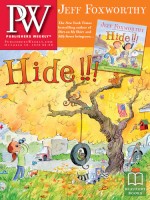Recently I wrote a post for the PWxyz blog about my dismay at the formatting of the e-book edition of Allen Ginsberg's Collected Poems. I read the e-book on the Kindle app on my iPad. In Ginsberg's famous poem "Howl," instead of Ginsberg's carefully considered liniation, what appeared on screen were pages and pages of half-formatted text that looked like a prose Word document in which somebody had hit "enter" too many times. Keep in mind that liniation on the page is one of the main ways poetry communicates its meaning—lines largely are why poetry isn't prose. For a reason that seemed unclear at the time, this little post attracted some attention—NPR picked it up on one of its blogs, there was lots of back-and-forth on Twitter, and I got a call from the Poetry Foundation. Why the attention? Not because people care deeply about the digital fate of poetry, but, I think, because the difficulties of formatting poetry e-books are magnified versions of the problems all publishers are having with getting their e-books to look as good as print books.
There are a couple of major issues that need to be dealt with if e-books are to approach print standards. Bud Parr, president of Sonnet Media, a Web design firm that has created Web sites for authors, presses, and organizations, who is beginning to expand his work from the Web to the e-book field, said, "The technologies that are used to create e-books in EPub are wholly familiar [to me] as a Web developer and designer." EPub uses the same style sheets, which "give it its formatting and its visual life," noted Parr. The main challenge in formatting e-books, according to Parr, is the way different Web-browsers—or, in this case, e-books, e-readers, and e-reading apps—interpret the code and style in an EPub file (Kindle, of course, has its own proprietary file format and style, and requires separate formatting). Because all the apps and devices work a little differently, the same file can look different in iBooks than it does in the Kobo app or on a Sony Reader. This is especially problematic with poetry or e-books with tables, visual elements, or a lot of tricky formatting: an indent, for example, might look right on one e-reader, but not indent enough on another, just because the two platforms are interpreting the same code differently.
The next big hurdle, according to Parr and Joshua Tallent, founder of eBook Architects, an Austin, Tex., company that formats e-books for presses and private clients and has worked with LibreDigital and eBookPie, is the outsourcing of much of the e-book production done by big trade publishers and distributors. Many e-books are essentially produced by dumping print book design files into software that performs a standard conversion process, converting every e-book the same way. Of course, a highly formatted book like Ginsberg's Collected Poems won't look correct if it's formatted the same way as a book of standard prose. Much of this work is done, according to Tallent, by companies in other countries, like India. "Outsourcing companies almost all use some kind of system that automates the conversion," said Tallent, leaving "a lot to be desired on the formatting side."
The solution is to do the coding by hand, book by book, so each book is formatted according to the needs of its text. "Most of the high level design on the Web is done by hand coding. The code is cleaner, more easily interpreted by a human, and there are fewer errors," said Parr, who suggests that the only way to get good results in e-books is to do them that way, too.
Tallent makes his living hand-coding e-books at eBook Architects: "We actually have developers sitting at a desk. They build the file from scratch." His company charges between $1.15 and $1.40 per page for e-book formatting, maybe a bit more for extremely complex e-books, a fee that can add up. For a big trade publisher digitizing hundreds of books and thinking about the bottom line, that rate could quickly become prohibitive. For a small press publishing a few titles a year, hand-formatting might also be out of the budget. The results, as Tallent noted, are a lot of mass-formatted e-books "that look like crap."
I sent Tallent a stanza from John Keats's "Ode to a Nightingale" so he could format it in EPub and show what the code looks like. As seen in the screen shot (at left), even if you don't know anything about HTML, the whole poem is swamped in code (that colored text). You can see the styling at the top, and then the code that interprets the style surrounding the text of the poem below. You can see this code in action in this downloadable Epub file. Suffice it to say that to get something like this to look right, it almost certainly needs to be done by hand.
There are even more issues at play with e-books of poetry—no one seems to have a foolproof solution for how to stop line breaks from getting at least somewhat screwed up if the font is made too large on an e-reader or app—and they mirror or magnify similar problem with formatting anything but the simplest of prose.
One solution might be a platform like Blio, which is designed to display graphically dense kinds of books, though relying on one platform to solve the industry's e-book design problem is not a good idea. As e-books command a big share of the overall book market, publishers will need to find an affordable method to make digital books look as good as most print books.



 Volume 257
Issue 41
10/18/2010
Volume 257
Issue 41
10/18/2010





